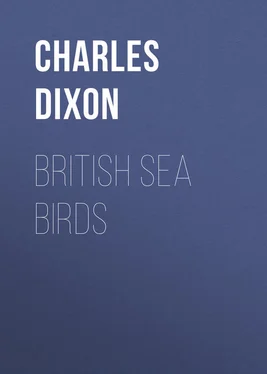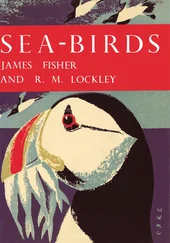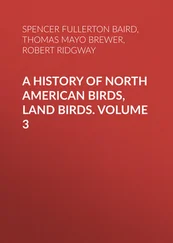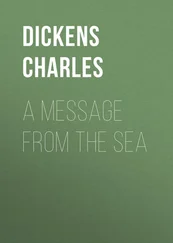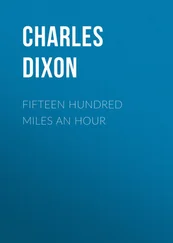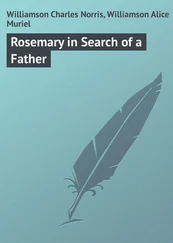Charles Dixon - British Sea Birds
Здесь есть возможность читать онлайн «Charles Dixon - British Sea Birds» — ознакомительный отрывок электронной книги совершенно бесплатно, а после прочтения отрывка купить полную версию. В некоторых случаях можно слушать аудио, скачать через торрент в формате fb2 и присутствует краткое содержание. Жанр: foreign_antique, foreign_prose, на английском языке. Описание произведения, (предисловие) а так же отзывы посетителей доступны на портале библиотеки ЛибКат.
- Название:British Sea Birds
- Автор:
- Жанр:
- Год:неизвестен
- ISBN:нет данных
- Рейтинг книги:3 / 5. Голосов: 1
-
Избранное:Добавить в избранное
- Отзывы:
-
Ваша оценка:
- 60
- 1
- 2
- 3
- 4
- 5
British Sea Birds: краткое содержание, описание и аннотация
Предлагаем к чтению аннотацию, описание, краткое содержание или предисловие (зависит от того, что написал сам автор книги «British Sea Birds»). Если вы не нашли необходимую информацию о книге — напишите в комментариях, мы постараемся отыскать её.
British Sea Birds — читать онлайн ознакомительный отрывок
Ниже представлен текст книги, разбитый по страницам. Система сохранения места последней прочитанной страницы, позволяет с удобством читать онлайн бесплатно книгу «British Sea Birds», без необходимости каждый раз заново искать на чём Вы остановились. Поставьте закладку, и сможете в любой момент перейти на страницу, на которой закончили чтение.
Интервал:
Закладка:
Of all the gulls that frequent the British coasts, this, the well-known Larus argentatus ( i. e. “silver-winged”), is certainly the most common and widely dispersed. It is no exaggeration to say that the Herring-Gull may be met with on every part of the British coasts, from the Orkney and Shetland Islands on the north, to Cornwall and the Scilly Islands in the south; from the Blasquets in the wild west of Ireland, to the mouth of the Thames and the Bass Rock in the east. It is the Gull par excellence associated in the popular mind with the sea shore – the “Sea Gull” of the visitor to marine resorts, ubiquitous, well-known from the Land’s End to John-o’-Groat’s. For its size, it is certainly the tamest and least suspecting Gull found on British waters. It may be readily recognised, when adult, by the pale grey colour of its mantle, but the young and immature birds are less easily identified. During the non-breeding season it wanders far and wide like the rest of its kind, and is a very frequent visitor to the fields, not only adjoining the sea, but at some distance inland. Whilst tilling operations are in progress, especially in spring, it passes regularly from the coast to the fields, following the plough, or collecting upon the newly-manured pastures, in quest of food. Wild, stormy weather, I have repeatedly noticed, will also drive this Gull landwards sooner, perhaps, than any other species. Like its congeners, it is practically omnivorous. Carrion is sought after as readily as living fish and other marine creatures. I have also known this species regularly to visit a slaughter-house near the coast, to feed upon the offal thrown upon the pastures for manure; and I have repeatedly watched the pure-plumaged birds fighting with the Rooks and Crows for a share of the feast. This Gull will also feed on grain, grubs, and worms, is a constant follower of vessels, and congregates in unusual numbers at fishing harbours during the sprat and herring seasons. In its flight it is graceful in the extreme, and it may often be seen soaring at a vast altitude like a Vulture. Writing on the flight of this Gull, Gätke (in his fascinating work, Heligoland, as an Ornithological Observatory ) says: “Not only are these Gulls able to soar in a calm atmosphere in a direction straight forwards, or sideways, on calmly outspread wings, but, as has been more fully discussed in the case of Buzzards, they can also, in a manner similar to theirs, soar upwards to any desirable altitude. The Gulls are able to perform their soaring movements on the same plane in all phases of the weather, during the most violent storm, as well as in a perfect calm, progressing forwards or sideways at the most variable rates of velocity; now darting along with the swiftness of an arrow, now merely gliding, as it were, at the slowest pace imaginable. In the latter case, indeed, we are frequently, even against our will, forced to the conclusion that these birds must have at their command some unknown means or mechanism which prevents their sinking; for neither is the surface-area of their wings large enough, nor are these organs sufficiently concave in form, to allow of their supporting the bird after the manner of a parachute.” I can endorse these remarks fully from my own observations (Conf. Idle Hours with Nature , pp. 261, 262). That these flights are accompanied with any vibratory movements of the feathers is erroneous, as I have had many opportunities of satisfying myself, especially when observing the flight of the Fulmar at St. Kilda, the birds then not being more than six feet away from me, when I am positive every individual feather was in perfect rest.
But to return from this digression to the general habits of the Herring Gull. The breeding season of this Gull is in May and June. Owing to its remarkable aptitude for accommodating itself to the various peculiarities of the coast, it is certainly the most widely dispersed Gull of the British species during the season of reproduction. Perhaps its favourite breeding place is a low rocky island, but failing this it is equally at home upon a range of sea cliffs, a stack of rocks, or less frequently an island in a loch, or, as at Foulshaw Moss in Westmoreland, a marsh. The nest is made on a ledge or in a hollow or chink of the cliffs; in a sheltered hollow of the grassy downs: or amongst the thick growth of sea campion, thrift, and other marine plants that often grow so luxuriantly in the bird’s haunts. I have remarked that the nest is usually larger when built on a cliff than when on the ground, and in some cases is almost dispensed with. It is composed of turf, dry sea-weed, coarse grass, and stalks of various marine plants, lined with finer grass often gathered green. The eggs are two or three in number, varying in ground colour from pale bluish-green through yellowish-brown to olive-brown, and the spots are small and few and dark brown, pale brown, and gray. This Gull will lay a second lot of eggs if the first clutch be taken, as they often are, for culinary purposes. When the nesting places are intruded upon by human visitors, the Gulls, as usual, become very noisy, the birds whose eggs are most directly threatened being filled with the greatest clamour. I have often remarked that Gulls whose nests were safe in inaccessible parts of the cliffs have remained quietly sitting on them, while their less fortunate neighbours have been filled with noisy alarm, as they watched the fate of their eggs from the air above. The note is very similar to that of the preceding species.
This pretty Gull, the Larus canus of Linnæus, is, during the summer months especially, one of the most locally distributed of the British species. The Common Gull formerly bred in Lancashire, but at the present time is not known to do so anywhere in England. From the Solway northwards, it becomes tolerably common as a breeding species, right up to the Shetlands, in many inland localities, as well as on the coast. It is also a somewhat local bird in Ireland. The Common Gull, or “Blue Maa,” as it is locally known, is about half the size of the Herring Gull, with a mantle, in the adult, almost as dark as that of the Lesser Black-backed Gull. During the non-breeding season this Gull is fairly well distributed along the coast, and then visits localities where it is never seen in summer. It is a decided shore species, rarely wandering far out to sea, and is one of the first Gulls driven inland by stormy weather. Although popularly believed to be so inseparably associated with the sea, the Gulls, and especially the smaller kinds such as the one now under notice, often resort to fields even at some distance from the water. The Common Gull seems as much at home inland as on the shore. I have seen it on the high moorlands, and in Scotland flying about many a loch pool, or land-locked sea arm; it is equally at home on the ploughed lands and the pastures, yet its plumage seems strangely out of place in such localities, and the incongruity is further intensified should the startled birds take refuge in a neighbouring tree, as they sometimes do. There is nothing specially remarkable about the flight of this Gull; it is performed in the slow and deliberate manner of all these birds, and is equally wonderful in many of its characteristics. The food of this Gull is composed indiscriminately of marine and terrestrial creatures. The bird will follow the plough, or search the pastures for grubs, insects, and worms; it searches the shore for any stranded creature to its omnivorous taste; it hunts the wide waste of waters in quest of fish, and follows vessels to pick up any refuse that may be thrown from them. This Gull is to a great extent nocturnal in autumn and winter. Its note is a harsh and persistently uttered yak-yak-yak , most frequently heard when its breeding places are invaded by man or predaceous animals. The Common Gull is a thoroughly gregarious and social bird, often congregating in large flocks, and mingling with other species.
Читать дальшеИнтервал:
Закладка:
Похожие книги на «British Sea Birds»
Представляем Вашему вниманию похожие книги на «British Sea Birds» списком для выбора. Мы отобрали схожую по названию и смыслу литературу в надежде предоставить читателям больше вариантов отыскать новые, интересные, ещё непрочитанные произведения.
Обсуждение, отзывы о книге «British Sea Birds» и просто собственные мнения читателей. Оставьте ваши комментарии, напишите, что Вы думаете о произведении, его смысле или главных героях. Укажите что конкретно понравилось, а что нет, и почему Вы так считаете.
